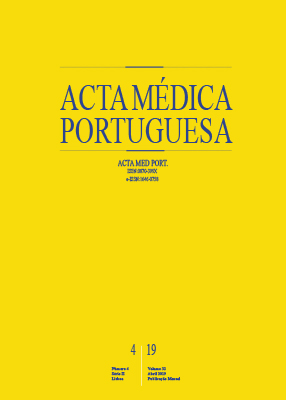Scrofuloderma: A Diagnosis to Bear in Mind in the Western World
DOI:
https://doi.org/10.20344/amp.10329Keywords:
Tuberculosis, CutaneousAbstract
The incidence of tuberculosis has been increasing worldwide. Contrarily, a recent decrease in Portugal has been reported. Cutaneous tuberculosis comprises a low percentage of all cases. We report a 70-year-old female with a 2-month-history of painful, nodular, suppurative lesions in the groin area, bilaterally. Previous history was remarkable for Human Immunodeficiency Virus infection and stage-IIIB cervical cancer. A skin biopsy, stained with periodic acid–Schiff and Fite’s stain, polymerase chain reaction on purulent discharge and mycobacterial culture of the skin were performed, leading to the diagnosis of scrofuloderma. Tuberculostatic therapy was initiated and complete response was observed. This case depicts an uncommon variant of tuberculosis, highlighting the need for awareness of the cutaneous variants of tuberculosis that, although rare, can still present in the clinic today.
Downloads
Downloads
Published
How to Cite
Issue
Section
License
All the articles published in the AMP are open access and comply with the requirements of funding agencies or academic institutions. The AMP is governed by the terms of the Creative Commons ‘Attribution – Non-Commercial Use - (CC-BY-NC)’ license, regarding the use by third parties.
It is the author’s responsibility to obtain approval for the reproduction of figures, tables, etc. from other publications.
Upon acceptance of an article for publication, the authors will be asked to complete the ICMJE “Copyright Liability and Copyright Sharing Statement “(http://www.actamedicaportuguesa.com/info/AMP-NormasPublicacao.pdf) and the “Declaration of Potential Conflicts of Interest” (http:// www.icmje.org/conflicts-of-interest). An e-mail will be sent to the corresponding author to acknowledge receipt of the manuscript.
After publication, the authors are authorised to make their articles available in repositories of their institutions of origin, as long as they always mention where they were published and according to the Creative Commons license.









